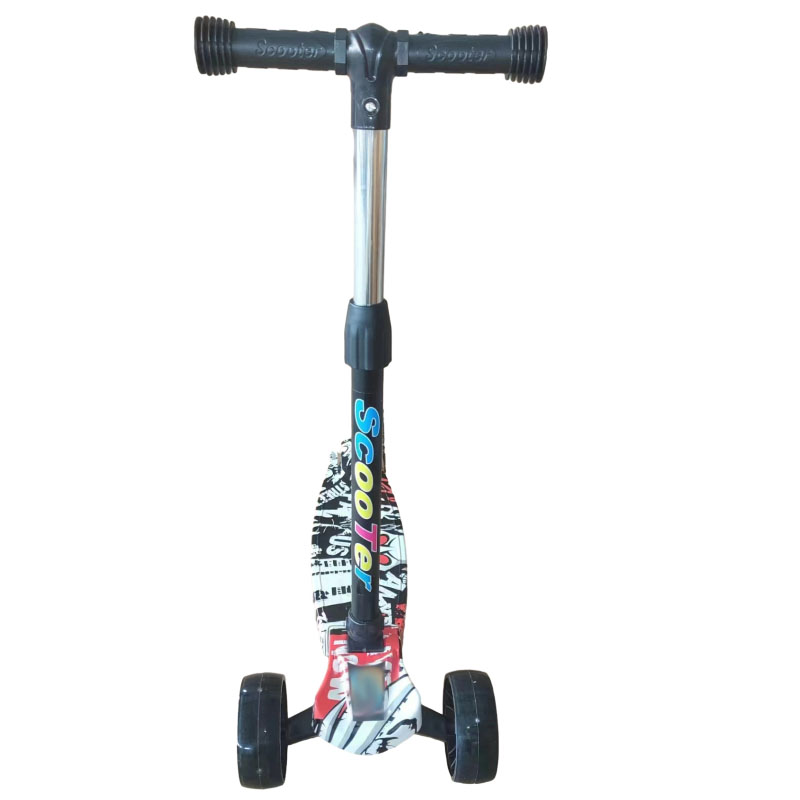Does This Kid's Scooter Steering Turn? Understanding Scooter Steering Mechanisms
When it comes to choosing the right scooter for your child, one question that often arises is Does this kid's scooter have a steering mechanism that turns effectively? Understanding how the steering on a scooter works is key to ensuring a safe and enjoyable ride for your little one. This article will explore the different types of steering mechanisms used in children's scooters, how they function, and the importance of steering in the overall riding experience.
Types of Steering Mechanisms
The vast majority of scooters designed for kids utilize two primary types of steering mechanisms traditional handlebar steering and tilt steering.
1. Traditional Handlebar Steering Traditional scooter designs employ handlebars that pivot on a vertical axis. When a rider turns the handlebars in one direction, the front wheel moves correspondingly, allowing the rider to change course. This type of steering mechanism is familiar and often seen in adult scooters and bicycles. It provides a straightforward user experience and is relatively easy for children to master.
2. Tilt Steering Tilt steering, on the other hand, involves leaning into turns to guide the scooter. Many kids' scooters, particularly those designed for younger riders, feature this type of steering. The front wheels tilt in the direction the rider leans, allowing for a fluid and intuitive steering experience. This mechanism is beneficial because it encourages balance and body coordination, essential skills for developing young riders.
How Steering Affects Riding Experience
The steering mechanism plays a crucial role in the overall riding experience. Here are some ways it impacts how kids ride
- Control and Stability A well-designed steering system offers better control. With traditional handlebars, kids can maneuver easily, while tilt steering helps build confidence as they learn to lean and steer simultaneously. This can greatly enhance stability, particularly when taking turns at speed.
- Safety The type of steering mechanism can affect the child's safety. A scooter that is responsive to steering inputs reduces the likelihood of accidents, as children can react swiftly to obstacles. Understanding how the steering operates can help parents gauge whether the scooter is safe for their child’s skill level.
does this kids scooter stearing turn

- Learning Curve Children may find some steering systems easier to learn than others. For example, young riders may struggle with traditional handlebar steering initially, but they might quickly grow comfortable with tilt steering. When choosing a scooter, it's essential for parents to consider their child's motor skills and comfort level with balance and turning.
Recommendations for Parents
When selecting a kid's scooter, it's vital to consider not just the aesthetic features but also the practicality of the steering mechanism. Here are a few tips
1. Assess Your Child’s Age and Skill Level Younger children may benefit from a scooter with tilt steering, as it allows for more natural movement and promotes balance. Older children, or those who have experience with scooters, may prefer traditional handlebars that allow for more precision.
2. Test the Scooter If possible, have your child test ride the scooter to see how they feel with the steering mechanism. This hands-on experience can reveal whether the steering feels intuitive and comfortable.
3. Prioritize Safety Features Look for scooters with safety features such as non-slip decks, sturdy construction, and easy-to-engage brakes. A scooter that feels secure underfoot can boost your child’s confidence while steering.
4. Choose the Right Size The scooter’s size can also impact steering. A scooter that is too tall or too short can hinder a child’s ability to steer effectively. Ensure that the handlebar height fits comfortably at the child's waist level.
Conclusion
In conclusion, understanding whether a kid's scooter’s steering turns effectively is crucial to selecting the right scooter for your child. By recognizing the differences between traditional handlebar steering and tilt steering, parents can make informed decisions that contribute to a fun and safe riding experience. After all, the joy of scooting should come with confidence and ease, allowing kids to explore the great outdoors while developing their motor skills along the way.
-

 Scoot&RideKids Child Kick Push Scooter 3 Wheels with LED Flashing Tilt Lean Boys Girls Scooter
Scoot&RideKids Child Kick Push Scooter 3 Wheels with LED Flashing Tilt Lean Boys Girls Scooter




- 4
$33.17 -

 Scoot&RideKids Scooter Child Kick Flashing LED Light Up 3 Wheel Push Adjustable Folding 3
Scoot&RideKids Scooter Child Kick Flashing LED Light Up 3 Wheel Push Adjustable Folding 3- 0
$25.52 -

 Scoot&RideKids Scooter Child Kick Flashing LED Light Up 3 Wheel Push Adjustable Folding 2
Scoot&RideKids Scooter Child Kick Flashing LED Light Up 3 Wheel Push Adjustable Folding 2- 0
$33.17 -

 Scoot&RideKids Scooter Teens Foldable Kick Push Scooter Adjustable Height Safe 2 Wheels
Scoot&RideKids Scooter Teens Foldable Kick Push Scooter Adjustable Height Safe 2 Wheels




- 4
$49.99
Meet our partners and discover what powers their creativity!
When you register for a Lohas scooter, you will receive a 10% discount on your first order and can be notified of sales, new product launches and other offers in advance.









